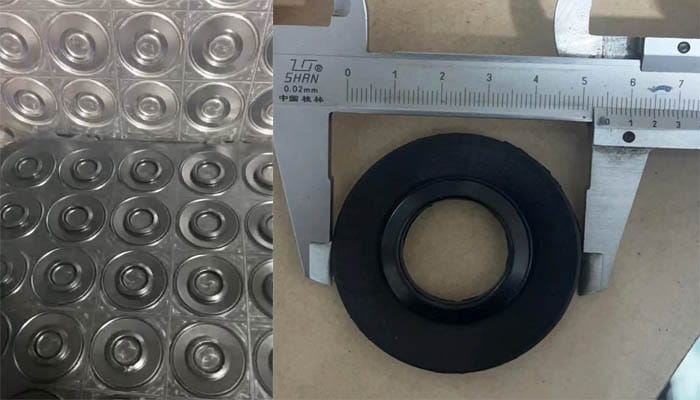In the rubber product manufacturing industry, rubber injection molding and rubber compression molding are two core production technologies. These two technologies have their own advantages and limitations, and choosing the right method is crucial to ensuring product quality and production efficiency. This article will explore the differences, advantages, application scenarios, and market trends of these two technologies to help manufacturers make wise production decisions.
Table of Contents
ToggleTechnical Principles and Process
Rubber Injection Molding
Rubber injection molding is a process in which molten rubber material is injected into a closed mold under high pressure and rapidly cooled and solidified in the mold. This technology is similar to plastic injection molding, but requires higher injection pressure and a special injection machine to adapt to the high viscosity of rubber.
Rubber Compression Molding
Rubber compression molding is to place an unvulcanized rubber preform in a heated mold, apply pressure to fill the mold with rubber and vulcanize it. This process requires a long vulcanization time, but the mold cost is relatively low.




Advantages Of Rubber Injection Molding VS Rubber Compression Molding
Advantages of rubber injection molding
- High degree of automation, suitable for mass production.
- Can produce complex geometric shapes with better details.
- Short production cycle and high production efficiency.
- High material utilization and less waste.
Advantages of rubber compression molding
- Low mold cost, suitable for cost-sensitive projects.
- Suitable for the production of large or thick-walled rubber products.
- Uniform pressure distribution during vulcanization and stable product quality.
- Suitable for a variety of rubber materials, including thermosetting and thermoplastic rubbers.
Application Of Rubber Injection Molding VS Rubber Compression Molding
Applications of rubber injection molding
- Auto parts, such as sealing strips and shock absorbers.
- Medical equipment, such as rubber gloves and seals.
- Rubber accessories in electronic equipment, such as buttons and seals.
Applications of rubber compression molding
- Large rubber products, such as tires and rubber pads.
- Industrial rubber products, such as pipe joints and seals.
- Special rubber products that require a longer vulcanization time.
Market Trends
With the development of global manufacturing, rubber injection molding and compression molding technologies are constantly improving. The application of automation and intelligent technologies is improving the production efficiency and product quality of these two processes. At the same time, environmental protection and energy conservation requirements have also promoted the development of new technologies and new materials.




Environmental Impact
Both rubber injection molding and compression molding need to consider their environmental impact. Injection molding has a relatively small impact on the environment due to its high material utilization rate and less waste. Compression molding, on the other hand, requires optimization of process parameters to reduce energy consumption and waste generation.
Industry Challenges
Both technologies face challenges such as fluctuations in raw material prices, rapid technological updates, and intensified global market competition. Manufacturers need to continue to innovate and improve production efficiency and product quality to remain competitive.
Future Outlook
In the future, rubber injection molding and compression molding technologies will continue to develop driven by new materials, new processes, and new technologies. The application of automation and intelligent technologies will further optimize the production process and improve production efficiency. At the same time, with the global focus on sustainability, these two technologies will also pay more attention to environmental protection and energy conservation.


Rubber injection molding and rubber compression molding each have their own unique advantages and application scenarios. Choosing the right technology requires considering the product’s shape, size, material properties, and production costs and efficiency. As technology continues to advance, these two processes will continue to play an important role in the rubber product manufacturing industry.
Rubber injection molding and rubber compression molding are the two pillars of the rubber product manufacturing industry. It is crucial for manufacturers to understand their differences, advantages, and limitations. As technology continues to develop, these two processes will continue to drive the rubber product manufacturing industry forward. Through in-depth analysis and reasonable selection, manufacturers can make full use of these two technologies to produce high-quality rubber products to meet market demand.


